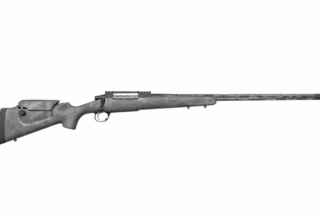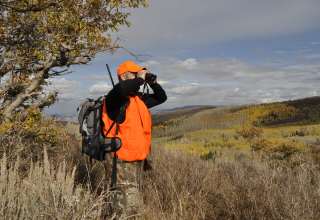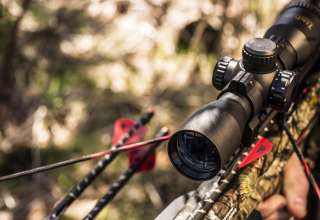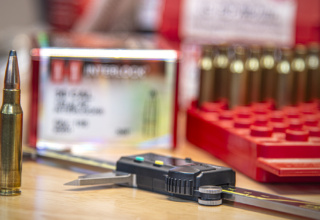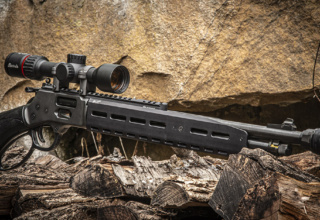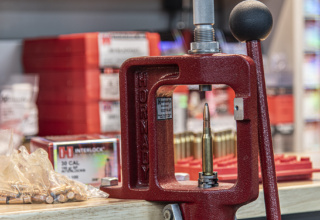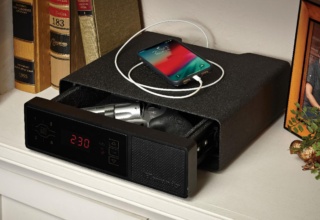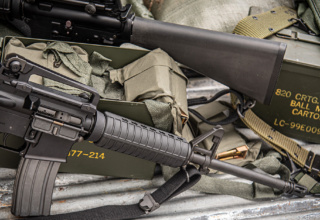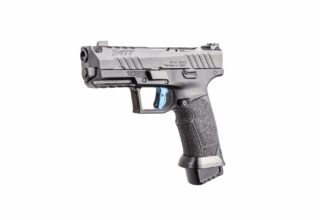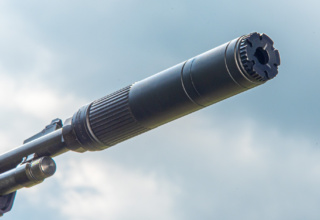Trail cameras have revolutionized deer hunting and research. Unlike the past, we can now see game animals in their natural habitat, carrying out their normal routines, in still pictures and video. Researchers also use trail cameras extensively to record travel patterns, mating rituals, and other wildlife behaviors that are difficult to observe first hand.
Trail cameras are invaluable to deer hunters because whitetails have a small core area in which they live. By posting cameras, nocturnal and the wariest of bucks will end up on a screen. Once their presence is known, hunters can take very specific steps to out-fox them using key information provided by cameras.
Selecting a Camera
 Trail camera picture quality has improved just like television technology. Stealth Cam now offers models that use the 4K resolution which provides unbelievable detail. Capturing such realistic images is personally exciting and lots of fun to share with friends. Cameras that transmit pictures by cell service are also worth a look. Although battery life is often shorter, having the camera send images directly to your phone or computer can keep you glued to the screen. Additionally, you don’t have to visit the camera site saving money on travel to offset cell costs.
Trail camera picture quality has improved just like television technology. Stealth Cam now offers models that use the 4K resolution which provides unbelievable detail. Capturing such realistic images is personally exciting and lots of fun to share with friends. Cameras that transmit pictures by cell service are also worth a look. Although battery life is often shorter, having the camera send images directly to your phone or computer can keep you glued to the screen. Additionally, you don’t have to visit the camera site saving money on travel to offset cell costs.
Trial Run
Before you post a camera, make sure that you understand how it works to avoid frustration. Most popular brands have YouTube videos to highlight key points. Posting the camera by a bird bath is great fun and a very cool family activity. Change the setting throughout the day, but watching two Robbins battle in a splashing contest can be hilarious. Start with a freshly formatted card so you will have room for video and high-resolution images.
Don’t skimp on batteries. You can save a few dollars by purchasing store brand power, yet you will get a full season of performance with Alkaline batteries. As the weather turns frigid and the deer action gets hot, camera batteries are taxed, and premium batteries perform longer and better.
Setting Up for Success
Place cameras in locations where deer are likely to pass. Where legal, establishing a mineral or bait site will lure deer to that spot. If you use corn for bait, be prepared for a myriad of squirrel, racoon, and possibly black bear images.
As the rut emerges, be mobile with your cameras. Should a heavy rub line emerge, post a camera to catch the buck that may still be traveling that route. Likewise, monitor a large scrape that’s deep in cover. Scrapes along fields are often visited at night and may be one-and-done signs that bucks will not revisit.

Although predicting a deer path can be difficult, attempt to have it walk toward the camera so that you will get a closer look at its antlers and you will have more time for the camera to work. Broadside shots may only capture part of the body as the buck walks by.
Elevate the camera so that its above your head and tilted slightly down. Black bears are notorious for biting and ruining cameras, especially if they are within easy reach. Additionally, other hunters will walk under the camera and not be tempted to pirate your card or be attracted to that stand site.
Use scent control strategies whenever you visit your camera sites. Wear rubber boots, approach from downwind, and wear latex gloves as you handle the camera. Carry a small computer or card reader so that you can check the images on the spot. Deer travel can change drastically during the rut and if a big buck is passing or visiting that location, climb in or hang a stand immediately.
Storing Your Camera
 Once the season ends, storing your cameras properly will have them good-as-new for the following spring or summer deployment. First, always remove the batteries and dispose of them properly. Left in the camera, they may leak or corrode and ruin the battery contacts.
Once the season ends, storing your cameras properly will have them good-as-new for the following spring or summer deployment. First, always remove the batteries and dispose of them properly. Left in the camera, they may leak or corrode and ruin the battery contacts.
Mark and label your media cards. You may want to download images into folders based on location, deer seen, or other factors. Begin the next year with a freshly formatted card.
Finally, store the cameras in a cool dry place. MTM Caseguard sells a sturdy plastic case that’s specifically designed for trail camera storage. It includes a separate case for media cards and is padded so that you can easily carry a case or two of cameras on your ATV without damage. Here’s a quick synopsis of features:
Game Trail Camera Case Features:
- SD card case included
- Securely stores up to four modern game trail cameras
- Sturdy foam padding holds each camera in its own individual slot
- Case is easily secured to ATV’s for easy transportation
- MSRP: $27.99
Visit: http://www.mtmcase-gard.com.
Trail cameras can help you become a more effective hunter. Take care of them and your investment will last for many seasons to come.
- Long Range Hunting - January 9, 2019
- Travel Smarter with Crossbows - November 24, 2018
- Portable Ambush Blind – The NAP Mantis - September 7, 2018


